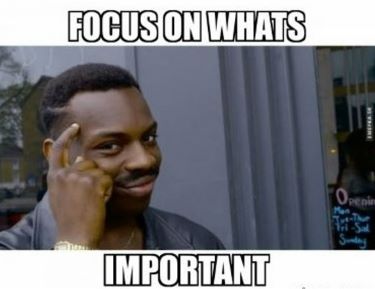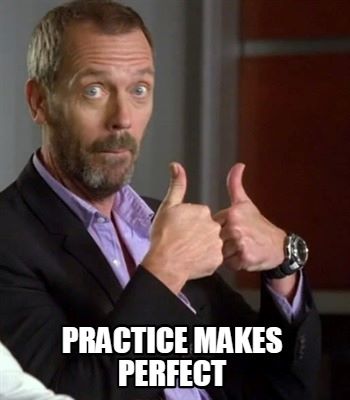Table of Contents
How to Ask for the Sale Without Feeling Awkward: 3 Simple Closing Techniques
Mastering effective closing techniques can ease the challenge of asking for the business. For many business owners and marketing leaders, stepping into a sales role feels… well, awkward. You’re passionate about your product or service, and you believe in the value you offer. Now, the moment has come to actually ask for the business, and a knot forms in your stomach. You might stumble over your words, feel pushy, or worry you’ll jeopardize the rapport you’ve worked hard to build. If this resonates, you’re far from alone.

Why Traditional Sales Tactics Often Backfire
Traditional sales training often conjures images of high-pressure tactics, aggressive pitches, and manipulative language designed to corner a prospect into saying “yes.” For professionals who value authentic relationships and genuine problem-solving, these methods feel deeply uncomfortable – and for good reason. They often prioritize the salesperson’s agenda over the client’s needs, leading to mistrust and backfiring spectularly when dealing with sophisticated buyers.
A Better Way to Ask for the Sale
The good news? Asking for the sale doesn’t require you to transform into a stereotypical ‘salesperson’ or adopt tactics that feel unnatural. In fact, some of the most effective closing methods are the simplest, most direct, and lowest pressure. They rely on clarity, value, and a natural progression of a productive conversation, not coercion.
What You’ll Learn in This Article
This article is designed to provide you with concrete, usable language and methods to confidently ask for the business without resorting to aggressive tactics. We’ll break down three simple, practical sales closing techniques that feel less like a confrontation and more like a helpful next step. The goal is to equip you with basic closing techniques you can use comfortably, overcoming that common “feeling awkward asking for the sale” barrier and helping you understand exactly what should I say when closing a deal.
Feeling Awkward Asking for the Sale? Why Simple Closing Techniques Work Best
Why Closing Feels So Uncomfortable for Non-Sales Professionals
Let’s be honest: for many who don’t have a background steeped in traditional sales, the idea of the “close” can feel like the moment you have to transition from being a helpful guide or consultant to being a mercenary demanding payment. Business owners pour their heart into their ventures; marketing leaders are focused on building brand and relationships. Neither role inherently trains you to navigate the specific tension that can arise when money changes hands. This is why the discomfort and anxiety around sales for non-sales professionals are incredibly common.
The Pitfalls of Avoidance and Aggressive Sales Tactics
When faced with the need to close a deal, the default often becomes either avoiding the ask altogether. They hope the customer just “gets it” and buys! Or, conversely, adopting overly aggressive tactics gleaned from outdated sales books. Neither extreme serves you or your potential client well. Avoiding the ask leaves money on the table and leaves the client without a clear path forward.
Aggressive ‘hard close’ tactics, on the other hand, feel unnatural. This is because they are unnatural in the context of building genuine relationships. They create pressure, erode trust, and often cause potential clients to retreat, feeling more like they’re being hunted than helped. c
Why Simple, Human-Centered Closing Techniques Work
The core principle here is fundamental: asking for the sale doesn’t require complex scripts, psychological tricks, or high-pressure maneuvers. It requires clarity and confidence in the value you provide. Think of it less as ‘closing a deal’ and more as ‘opening the door’ to the client receiving the solution they need. Simple, low-pressure closing techniques work because they align with this more human-centric view of business. They respect the client’s journey, acknowledge their agency, and make the decision process straightforward.
From Awkward to Authentic: Learning to Ask with Confidence
The goal of this article is to move you from feeling awkward asking for the sale to feeling capable and comfortable. We’ll provide practical, easy ways to ask for the sale that you can integrate into your process immediately. Proving that basic closing techniques can be incredibly effective when applied with authenticity and a focus on serving the client.
Laying the Groundwork: Preparing to Ask for the Business Effectively
Before you even think about asking for the business, you need to make sure you’ve set the stage correctly. Attempting to close prematurely or without sufficient preparation is a primary reason why sales conversations feel forced or uncomfortable. The foundation of a successful, low-pressure close isn’t about a magic phrase; it’s about the quality of the interaction leading up to the ask. This is where the idea of a well-structured sales funnel comes into play. The “close” is the natural conclusion, not an abrupt event.
Build Rapport and Trust Early
First and foremost, the importance of building rapport and trust before making any ask cannot be overstated. People buy from those they like and trust. This isn’t just a cliché; it’s a fundamental human principle. Taking the time to connect on a personal level, understand their world, and make them feel heard creates a comfortable environment where discussing next steps feels natural, not transactional.
Deeply Understand Their Needs
Secondly, you must actively listen to and truly understand the client’s needs, challenges, and goals. This goes beyond just hearing their words; it means empathizing with their situation. You need to identify the root cause of their problems and grasp what success looks like for them. Your solution should be presented not just for its features, but specifically for how it addresses their unique situation.
Connect the Dots with a Clear Value Proposition
Following from understanding their needs, you must clearly articulate your value proposition and, critically, confirm that it aligns with their specific situation. Don’t assume they’ve made the connection. Explicitly state how your product or service solves their stated problems or helps them achieve their goals.
Ask clarifying questions like:
- “Do you see how [Benefit] could impact [Their Goal]?”
- “Does that make sense in terms of how [Your Solution] could help you with [Their Problem]?”
Watch for Buying Signals
Throughout your conversation, pay close attention to buying signals. These are verbal or non-verbal cues that indicate a potential client is interested, engaged, and potentially ready to move forward. They might ask about pricing, implementation timelines, guarantees, or next steps. They might lean in, nod frequently, or speak with increased enthusiasm. Recognizing these signals helps you identify the right moment to transition towards asking for the business. This makes the close feel less like an interruption and more like a timely response to their interest.

Address Questions and Concerns Before the Close
Finally, make sure you have addressed their key questions and concerns prior to the close. Unaddressed objections or lingering confusion will prevent anyone from saying yes, no matter how perfectly you phrase your ask. Proactively ask if they have any questions, or if there’s anything they’re still unsure about.
Clearing the air before you ask for the sale is a crucial step in paving the way for a positive response. When this groundwork is laid effectively, the simple closing techniques we’re about to discuss feel less like ‘techniques’ and more like logical conclusions to a helpful conversation.
Direct Question Close: A Straightforward Path to Commitment
Feeling awkward asking for the sale often stems from overcomplicating the moment. You think you need fancy words or persuasive monologues. The Direct Question Close strips away that complexity, offering one of the easiest ways to ask for the sale.
What is the Direct Question Close?
At its heart, the Direct Question Close is exactly what it sounds like: simply and clearly asking the potential client if they are ready to proceed or move forward. There’s no elaborate setup, no subtle prompting – just a straightforward question inviting them to make a decision about the next step. It’s unambiguous and requires a direct response.
Its straightforward nature is precisely what makes it so easy to understand and implement, particularly for beginners. You don’t need to memorize complex dialogue trees or anticipate every possible objection within the ask itself. You just need to ask the question.

Why This Method is Low-Pressure and Effective for Beginners
The power of Direct Question Close, especially as low-pressure closing techniques, lies in their honesty. They avoid manipulative language and feel genuine because you’re simply laying the decision at the client’s feet after providing them with information and value. These techniques respect the client’s autonomy by directly soliciting their decision. You’re not trying to trick them; you’re asking for their input on moving forward.
These closing techniques remove ambiguity about the next step in the process. There’s no guessing game; the client knows exactly what you’re asking them to consider. When you’ve done the work of building rapport and clearly articulating value, the direct question feels like a natural, logical progression of the conversation. It’s the simplest bridge from discussion to decision. Because it’s so simple and direct, it helps alleviate some of the anxiety associated with the ‘salesy’ feel of closing. You’re just asking a question.
How to Implement the Direct Question Close Step-by-Step
Implementing the Direct Question Close effectively is less about memorizing a script and more about identifying the right moment and phrasing it clearly.
- Identify the right moment: This usually comes after you’ve presented your solution, addressed their key questions, and ideally received some positive buying signals. It’s when you feel you’ve provided enough information and value for them to make an informed decision.
- Phrase the question clearly and concisely: Avoid jargon or overly complex sentence structures. Get straight to the point.
- Know when to stop talking: This is crucial. Once you ask the direct question, be silent. Resist the urge to fill the silence with additional selling points or nervous chatter. Give the client space and time to think and respond. The next voice after yours should be theirs.
Example Scripts: What Should I Say When Closing a Deal Using This Technique?
Here are several examples of what you might say using the Direct Question Close, tailored slightly for different contexts:
- General, Post-Presentation/Demo: “Based on everything we’ve discussed today, does [Your Solution/Product/Service] sound like the right fit for what you need at [Their Company Name]?”
- Hypothetical Scenario: Imagine you’ve just finished a demo of your project management software for a marketing team. You’ve shown how it helps them organize campaigns and track deadlines (addressing their stated need for better organization). You might say, “Based on everything we’ve discussed today and how it handles campaign tracking, does [Your Software Name] sound like the right fit for what you need at [Marketing Agency Name]?”
- More Direct, Assuming Value is Understood: “Are you ready to move forward with [Product/Service]?”
- Action-Oriented: “How would you like to get started?” (This assumes they are moving forward and pivots the decision to how, a subtle variation sometimes called the “Assumptive Close,” but in its simple form, it’s just a direct path forward).
- Service-Oriented: “Shall we go ahead and get you set up with [Service/Account]?”
- Following a Proposal: “Have you had a chance to review the proposal? Based on that, are you ready to approve it and begin [Project Name]?”
- Tailoring to Context: If you’re selling a course, you might ask, “Are you ready to enroll in the [Course Name] program?” If it’s a physical product, “Would you like me to ring that up for you?” The key is tailoring the direct question to the specific context of the interaction while remaining clear and unambiguous.
Why the Direct Close Works So Well
The beauty of these basic closing techniques is their simplicity. They invite a yes or no response, or a question about next steps. They don’t demand a purchase; they ask if the client is ready to take the next logical step. This makes the ask feel less like a demand and more like a natural part of the process. A process that ideally began with building rapport and understanding their needs.
Summary Close: Reinforcing Value Before the Ask
If the Direct Question Close feels a little too abrupt for your style or industry, the Summary Close offers a slightly softer, value-reinforcing approach before making your ask. It’s another excellent simple closing method for business owners and beginners.
What is the Summary Close?
The Summary Close involves briefly reiterating the key benefits you’ve discussed and specifically linking them back to how they address the client’s stated needs or problems. Immediately following this concise recap, you transition into an invitation to proceed or move forward. The focus here is on value confirmation as the bridge to the ask. You remind the client of why this solution is right for them before asking them to commit.
Why This Method Works Well as a Simple Closing Techniques
These methods work well as practical sales closing techniques because they anchor the decision in the value the client stands to gain. By reminding them of benefits tied to their pain points or goals, you reinforce the reason to move forward. The ask feels like a logical next step, based on a shared understanding of the problem and how your solution helps.

It also lowers pressure compared to a direct ask. You’re framing the decision around the client’s needs and the value offered, not just asking for a commitment out of nowhere. You’re not simply asking if they want to buy—you’re asking if they want to move forward based on the value discussed. This emphasis on the ‘why’ behind the purchase makes the moment feel more purposeful and less like a transaction.
Implementing the Summary Close Effectively
Effective implementation of the Summary Close requires thoughtful preparation and execution:
- Identify the most impactful points or benefits to recap: These should be the benefits that the client specifically reacted positively to during your conversation. Or to those points that directly address their most significant stated needs or challenges. Don’t recap everything; select the 2-3 most powerful points from their perspective.
- Keep the summary concise and client-focused: Your summary should be brief, perhaps 2-3 sentences. Frame the benefits in terms of the client’s outcome, not just a list of features. Use phrases like “you mentioned you needed…” or “this will help you achieve…”.
- Phrase the transition smoothly: The handoff from your summary of value to your ask needs to feel natural. Use transition phrases like “Given these benefits…” or “Based on how this addresses [Problem/Goal]…”
Example Scripts: Practical Sales Closing Techniques Using Summary
Here are some example scripts demonstrating the Summary Close:
- Addressing Problems & Goals: “So, just to recap, we’ve talked about how [Feature A/Benefit 1] will help you overcome [Problem 1], and how [Feature B/Benefit 2] will enable you to achieve [Goal 2], which you mentioned are top priorities. Given these benefits, would you like to move forward with implementing [Your Solution]?”
- Hypothetical Scenario: You’re selling a CRM system. The client told you their biggest issues are losing track of leads and difficulty measuring marketing ROI. You’ve shown them the lead tracking features and the built-in analytics dashboard. You might say, “So, just to recap, we’ve talked about how our automated lead tracking will ensure no potential customer falls through the cracks, and how the integrated analytics dashboard will give you clear insight into your marketing ROI, addressing those key challenges you mentioned. Given how [CRM Name] can help you with lead management and ROI tracking, would you like to move forward with getting your team set up?”
- Focusing on Key Needs: “You mentioned that [Need 1] and [Need 2] are critical for your business right now. We’ve shown how [Product/Service] addresses both of those by providing [Benefit 1] and [Benefit 2]. Does that sound like the right path forward for you to address [Need 1] and [Need 2]?”
- Recapping Specific Outcomes: “Based on our conversation, it seems that achieving [Outcome A] and saving [Resource, e.g., time/money] are your main objectives. We’ve outlined how [Your Solution] facilitates [Outcome A] and creates those savings. Does it make sense to proceed with [Your Solution] to achieve these results?”
- Structuring Summaries Based on Conversation: Always tailor the summary to the specific points that resonated most with that particular client. Review your notes or recall the moments they seemed most engaged or voiced agreement. Those are the points to highlight.
Why the Summary Close Feels So Natural
The Summary Close feels less daunting because you’re not just asking for a transaction; you’re asking for a confirmation that the value you’ve demonstrated aligns with their needs and if they are ready to act on that alignment. It’s a confident way of saying, “Here’s the value we discussed, and here’s the path to getting it.”
Options Close: Framing the Decision Through Controlled Choice
For those who feel uncomfortable with a single direct question, or who have clients that benefit from a slightly guided decision process, Options Close are excellent low-pressure closing techniques. They subtly shift the client’s thinking from “Should I buy?” to “Which of these makes the most sense for me?”
What is the Options Close?
The Options Close involves presenting the potential client with two or three clear, well-defined choices for proceeding. These options could relate to different packages, service levels, payment plans, implementation timelines, or even just the next immediate step (like reviewing the contract or scheduling onboarding). The core idea is that you assume they are going to move forward and instead focus the decision on the specifics of how.
Why This Low-Pressure Closing Technique is Effective for Beginners
This technique is particularly effective as an easy way to ask for the sale for several reasons.
Moves the Conversation Forward Without Pressure
First, it subtly moves the conversation forward without a direct ‘yes’ or ‘no’ demand on the core decision of buying. By presenting choices about the details of the purchase, you guide them towards making a decision related to moving forward without forcing a binary “buy or don’t buy” moment right away.
Gives the Client a Sense of Control
Secondly, it gives the client a sense of control over the details of the purchase. They get to choose the option that best fits their needs, budget, or timeline. This will make them feel more empowered in the process. This perceived control can significantly reduce the feeling of being ‘sold to’.
Simplifies the Decision-Making Process
Implementing the Options Close requires a little preparation and clear communication:
Finally, it simplifies the decision-making process by limiting choices. While too many options can overwhelm, presenting 2-3 clear, distinct paths makes it easier for the client to compare and select the best fit without getting bogged down in infinite possibilities. They are practical sales closing techniques that respect the client while gently moving the conversation toward commitment.
How to Implement the Options Close Effectively
- Have clearly defined and easy-to-compare options available: Whether it’s pricing tiers, service packages, or different start dates, make sure your options are well-defined and the differences are easy for the client to understand. Avoid jargon or complex matrices.
- Present the options clearly: Briefly explain each option. Highlight the differences that are most relevant to the client’s previously stated needs or preferences. Frame the options in terms of the value they deliver or the problems they solve at different levels.
- Ask a question that requires them to select one of the presented options: Your question should clearly prompt them to choose from the choices you’ve just outlined. Avoid asking “Does either of these work?” which allows for an easy “no.” Instead, ask “Which of these works best?”

Example Scripts: Easy Ways to Ask for the Sale with Choices
Here are examples of how you might use the Options Close:
- Considering Service Tiers: “Based on our discussion about your needs, it seems like either the [Option A] package or the [Option B] package would be a great fit. The [Option A] package includes X and is ideal for businesses focused on [Specific Outcome], while the [Option B] package includes X, Y, and Z, offering more [Broader Benefit]. Which of these packages feels like the better fit for your current goals?”
- Hypothetical Scenario: You’re selling a software subscription with Basic and Pro tiers. The client expressed a need for core functionality but also mentioned potentially needing advanced reporting later. You might say, “We have two options that align with what you’re looking for: the Basic plan gives you all the core features we demoed today that handle your [Core Need], and the Pro plan adds that advanced reporting functionality you mentioned might be useful down the line, plus priority support. Would you prefer to start with the Basic plan now, or does the flexibility of the Pro plan better meet your anticipated needs?”
- Looking at Timelines: “We could schedule your onboarding session for next Monday or Tuesday. Which day works better for you to get started?” (This assumes they’ve decided to move forward and focuses the choice on the immediate next step).
- Based on Next Steps in Process: “Would you like me to send over the service agreement for your review now, or should we set up the payment plan first?”
- Framing Choices Based on Preferences: If a client mentioned budget sensitivity or a preference for faster implementation, you might present options that cater to those specific constraints, then ask, “Given your focus on [Preference, e.g., budget], does the [More Budget-Friendly Option] seem like the right starting point?”
Why the Options Close Works
The Options Close is a smooth way to transition to the sale because it leverages decision-making psychology – humans are often more comfortable choosing between options than giving a single yes/no. It’s one of the practical sales closing techniques that allows you to guide the conversation effectively while still feeling low-pressure and respectful of the client’s time and preferences.
Addressing the Fear: Handling Hesitation and “Not Yet” Responses
Using simple closing techniques is powerful, but it doesn’t guarantee an immediate “yes” every time. A common fear, especially when you’re feeling awkward asking for the sale, is facing hesitation or a “not yet” response. It’s crucial to understand that client hesitation or objections are a normal part of the process – they are rarely personal rejection. Often, they are simply requests for more information, clarification, or a need for more time.
Start by Uncovering the Root Cause
When faced with hesitation, your first step should be to gently uncover the root cause. Instead of immediately launching into more selling points, ask clarifying questions. Simple questions like, “What concerns do you have?” or “What feels like the biggest hurdle for you right now?” or “Is there anything we haven’t discussed that’s giving you pause?” can open the door to understanding their perspective. They might reveal a misunderstanding about pricing, a concern about implementation, a timing issue, or a need to consult with a partner.
Respond with Empathy, Not Pressure
Basic strategies for addressing common objections in a non-confrontational way involve listening actively, validating their concern, and then providing a clear, concise answer. For instance, if they say “It’s too expensive,” instead of defending your price aggressively, you might say, “I understand budget is important. Could you tell me a little more about your budget expectations so we can see if there’s a way to align?” If they say “Now’s not the right time,” you might ask, “I appreciate that; things are busy. What timeline were you hoping for, and what needs to happen for it to be the right time?” The goal is to understand and address, not to argue or pressure.

Know When to Inform vs. When to Step Back
Knowing when to provide more information vs. when to respect their decision is also key. If their hesitation is due to a lack of clarity, provide the necessary details. If their objection is a genuine, unresolvable conflict (e.g., they absolutely cannot afford it, or their strategic direction is fundamentally incompatible), pressuring them won’t help. Respect their position and thank them for their time.
Turn “Not Now” into a Future Opportunity
Finally, turning a “not now” into a plan for future follow-up is a valuable skill. If the timing isn’t right but there’s genuine interest, agree on a specific next step and timeline. “Okay, it sounds like you’re focusing on [Project X] right now. How about I check back in with you in [Number] weeks/months, after [Project X] is completed, to see if the timing is better?” This keeps the door open without being pushy and provides clarity for both parties. Handling hesitation with grace and helpfulness reinforces your authority and trustworthiness, even if the sale doesn’t happen immediately.
Practice and Refinement: Making the Ask Natural (How to Close a Sale for Beginners)
Feeling comfortable asking for the sale is a skill, and like any skill, it improves with practice and refinement. For beginners learning how to close a sale, the initial attempts might still feel a bit clunky or nerve-wracking, even with simple techniques. That’s perfectly normal.
Start Small: Practice in Safe Settings
The importance of practicing your ask in low-stakes environments cannot be stressed enough. Start by practicing with a friend, colleague, or even in front of a mirror. Say the words out loud. Get comfortable with the phrasing of the Direct, Summary, or Options closes. The more you vocalize the words, the less foreign they will feel when you say them to a potential client.
Role-playing potential scenarios is incredibly helpful, especially practicing your response to common objections or moments of hesitation. Have a friend play a hesitant client, and practice your calm, questioning response. This helps you build muscle memory for navigating these moments gracefully rather than freezing up or becoming defensive.

Reflect, Adjust, and Build Confidence
Analyzing your own conversations is also crucial for identifying areas for improvement. After a sales interaction, take a few minutes to reflect. What went well? When did you feel awkward? What questions did they ask that you struggled to answer clearly? Did you miss any buying signals? Did you actually ask for the business? Be constructive, not critical, in your self-assessment.
Building confidence through repetition and small successes is key. Don’t expect to be a closing master overnight. Celebrate the small wins – a conversation where you felt slightly less awkward, a time you handled an objection smoothly, or even just successfully making the ask, regardless of the outcome. Each attempt builds your confidence and hones your skills.
Shift Your Mindset from Selling to Helping
Crucially, focus on the value you provide rather than the act of ‘selling’. Shift your mindset from “I need to close this deal” to “I need to help this person get the solution they need, and asking is the next step in that help.” When you genuinely believe in the positive impact your product or service will have, the ask feels less like a demand and more like a necessary part of facilitating that positive change.
Finally, seeking feedback (if possible) from trusted colleagues or mentors can provide invaluable insights. A fresh perspective can spot blind spots or offer alternative phrasing that feels more natural to you. Remember, becoming comfortable with asking for the business is a journey, and these simple techniques are your starting point for confident, low-pressure selling.
Seamlessly Integrate the Ask into Your Sales Process
The aim isn’t just to have a few closing phrases in your back pocket, but to integrate the act of asking for the business into your standard client interaction process. When asking becomes a natural, expected part of your customer journey – a natural conclusion facilitated by the value built throughout a well-structured sales funnel – it feels less like a high-stakes moment and more like simply guiding the client to the next logical stage.
Identify the Right Moments to Ask
Start by identifying natural points in your typical client interaction flow where an ask makes sense. This might be at the end of a discovery call where you’ve confirmed fit, after presenting a proposal or demo, or following a conversation where you’ve addressed all their questions. Pinpointing these moments allows you to prepare mentally and integrate the ask without it feeling shoehorned in.
Making asking for the sale a standard part of your process, not an afterthought, is vital. Just as you have steps for initial contact, discovery, and presentation, build in the step for proposing the next step or asking for commitment. When it’s a consistent part of your routine, the anxiety decreases.
Keep Your Ask Aligned with Your Brand Voice
Aligning your closing language with your overall brand voice and relationship style is also important. If your brand is warm and friendly, your ask should reflect that. If it’s professional and direct, your ask can be too. Authenticity is key to avoiding that “feeling awkward asking for the sale” sensation. The simple techniques described here are versatile enough to be adapted to various styles.
Refine and Normalize the Process Over Time
As you use these methods, pay attention to which simple closing techniques work best for your business and audience. Does the Direct Close feel more natural for your clients? Do they respond well to seeing options? Tracking your results informally can help you refine your approach.
Consistently applying these techniques is the path to making them feel less awkward over time. The more you do it, the more routine it becomes. What starts as a nerve-wracking hurdle will gradually transform into a standard, comfortable part of how you help clients move forward and achieve their goals with your support.

Client Communication
Your team needs to help prospects fall in love with your product or service and trust that the recommended purchase and next steps will solve their problems. “Lead with service, never nervous” is the sales culture we teach.
What Should I Say When Closing a Deal? Quick Reference and Confidence Boosters
Let’s boil it down to those key phrases and some final thoughts to boost your confidence when it’s time to ask for the business. Remember, the power of these phrases comes from the groundwork you’ve laid beforehand.
Go-To Phrases for Simple, Effective Closes
Here’s a summary list of go-to phrases and sentence starters for asking directly, using the simple closing techniques we’ve discussed:
Direct Question Close:
- “Are you ready to move forward with…?”
- “How would you like to get started with…?”
- “Shall we go ahead and get you set up…?”
- “Does this sound like the right fit for your needs?”
- “Are you ready to approve the proposal?”
Summary Close (Start with a brief recap, then transition):
- “So, just to recap, we’ve discussed how [Benefit 1] addresses [Problem 1] and [Benefit 2] helps achieve [Goal 2]. Given this, would you like to proceed with…?”
- “Based on how [Your Solution] helps you with [Need 1] and [Need 2] by providing [Key Value Points], does this seem like the right path forward?”
- “You mentioned [Priority]. We’ve shown how [Your Solution] delivers on that. Are you ready to implement…?”
Options Close (Present options, then ask):
- “Would you prefer Option A or Option B to begin?”
- “Does [Specific Timeline 1] or [Specific Timeline 2] work better for scheduling [Next Step]?”
- “Should we start with the service agreement or the onboarding process?”
Remember the key elements to include in a summary close: connect benefits directly to the client’s stated needs or goals, and keep it concise. For the options close, ensure your examples of how to structure options questions are clear and focus the decision on which not if.
Final Confidence Boosters to Keep in Mind
Finally, here are a few reminders for sounding confident and professional during the ask:
- Believe in your value: Your confidence stems from knowing you can genuinely help.
- Speak clearly and directly: Avoid hedging or apologizing for asking.
- Be silent after you ask: Give them space to respond. It feels longer to you than it does to them.
- Always be prepared for questions or hesitation: It’s a natural part of the process. Handle it calmly using the techniques discussed.
- Adapt scripts to your authentic voice: Don’t sound like you’re reading from a teleprompter. Make the language your own.

Mastering the art of asking for the business isn’t about high-pressure tactics; it’s about confidently and clearly guiding a client to a decision after you’ve demonstrated genuine value. By practicing these simple closing techniques – the Direct Question, the Summary Close, and the Options Close – you can overcome the feeling awkward asking for the sale and transform it into a natural, comfortable part of growing your business and helping your clients succeed.
More Useful Posts from Sales Funnel Professor
- One and Done Meaning – A high-impact sales approach focused on closing the deal in a single interaction.
- Closing the deal – The final step in the sales cycle where the customer commits and the sale is confirmed.
- What is a Sales Cycle? – The step-by-step process a business follows to turn a lead into a customer.


